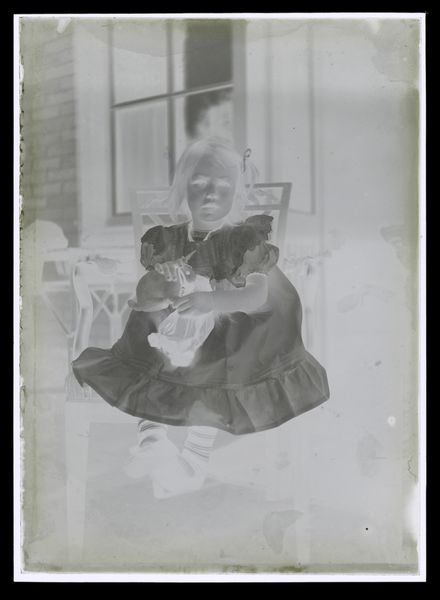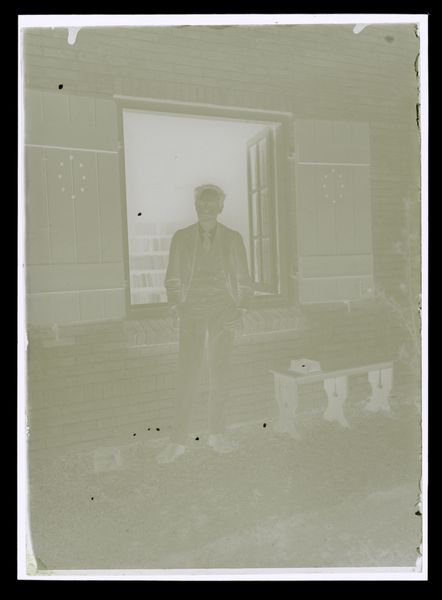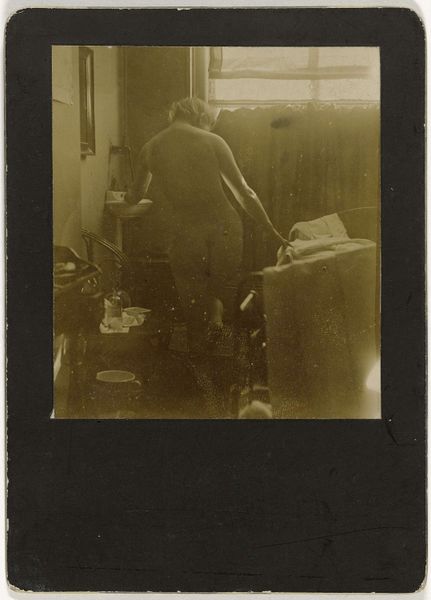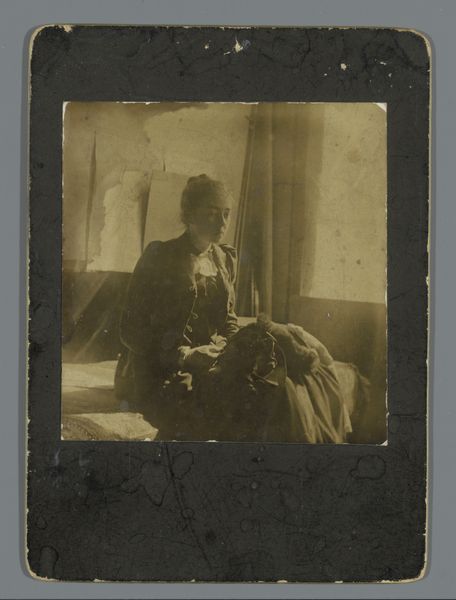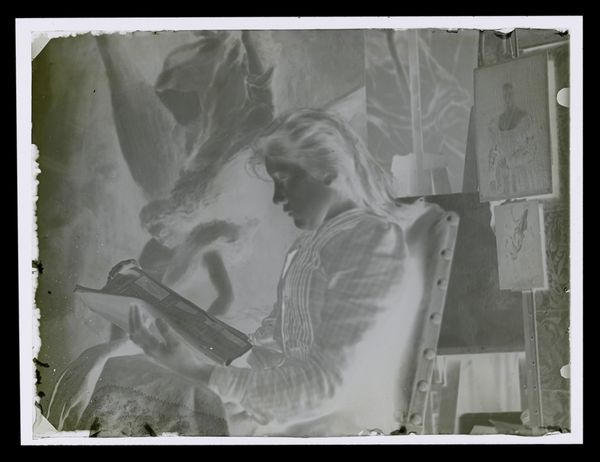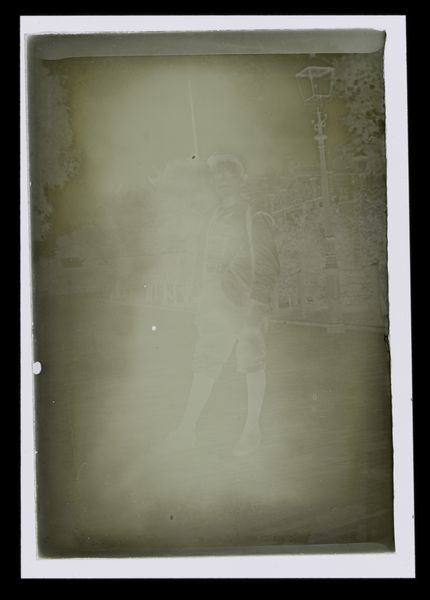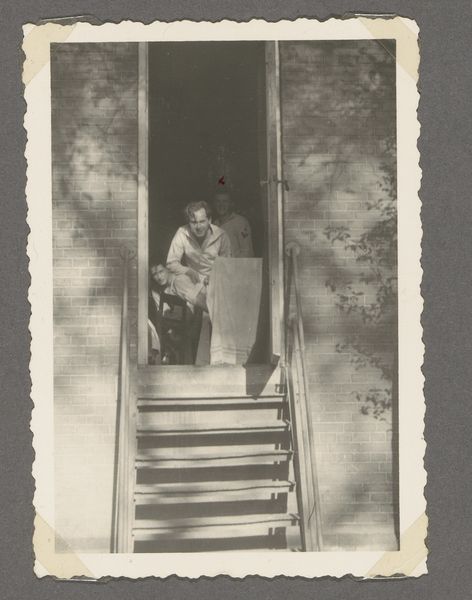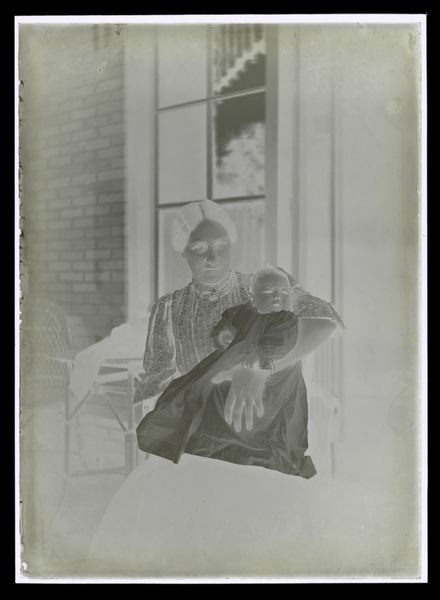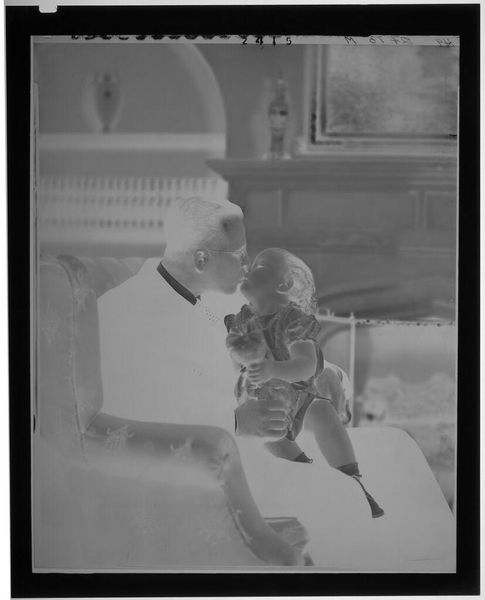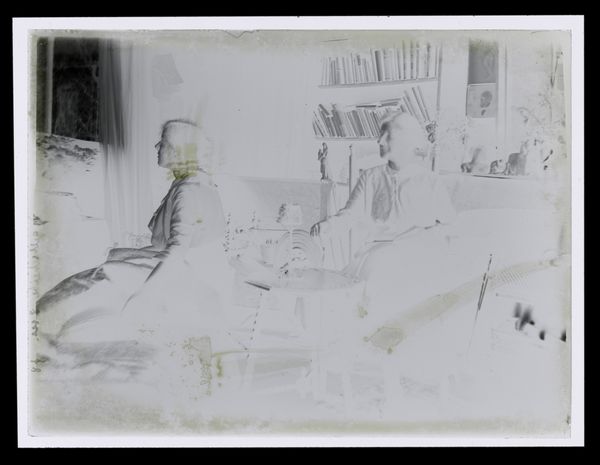
photography
#
portrait
#
photography
#
realism
Dimensions: height 130 mm, width 180 mm
Copyright: Rijks Museum: Open Domain
Curator: It's ghostly, almost spectral. Is this what it felt like to be photographed in those early days? A stripping away, a reduction? Editor: Exactly! We’re looking at "Foto," a photograph likely taken between 1895 and 1925. It’s a portrait attributed to W.G. Hondius van den Broek. It’s striking in its simplicity. Curator: I am particularly drawn to how the photographic inversion transforms familiar roles. We see a man, presumably the father, cradling a child. Yet the reversed tones create an almost alien intimacy. It really makes you think about the performativity of parenthood. The almost ceremonial whiteness and exposure. Editor: I see it too! There’s an otherworldly quality that the negative imparts, as if capturing something from the spirit realm. The baby, bundled securely, and the father with such solemn attentiveness... They almost glow from within, echoing Madonna and child iconography, an inversion, of course. Note how the objects in the background– a table, books perhaps—suggest domesticity, order, knowledge. Yet, here it all becomes ephemeral through photography's alchemical process. Curator: And what of that order, the patriarchal structure embedded in it? Is the photograph a document of love, or control? Is this the assertion of male domesticity as some kind of quiet claim in Dutch society at the turn of the century? Early photography and eugenics certainly share space with early paternal care in Europe during this period. The light rendering might just serve to make such things clear and visible to modern sensibilities. Editor: A good point to consider how light itself becomes a symbol, not just in photography but across art history. Light as revelation, enlightenment...or exposure in this context, revealing potentially problematic social power dynamics. Curator: Considering photography's ability to freeze a moment in time, does that contribute to your read of symbols in that era and moment as enduring values, and less social expectations imposed from on high? Is it recording history or trying to define it? Editor: Maybe it’s a bit of both. It gives a tactile sense of history being formed right before our eyes. Curator: The photographic process does lend it that sense of "captured" truth. Editor: This image, however we read into it, makes you ponder how time, and evolving culture, shapes the meaning we find. Curator: Indeed. It reminds us that history is as much about asking questions of the past as it is about knowing its facts.
Comments
No comments
Be the first to comment and join the conversation on the ultimate creative platform.


